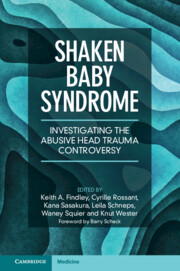Ongoing developments in neuroscientific techniques and technologies—such as neuroimaging—offer potential for greater insight into human behavior and have fostered temptation to use these approaches in legal contexts. Neuroscientists are increasingly called on to provide expert testimony, interpret brain images, and thereby inform judges and juries who are tasked with determining the guilt or innocence of an individual. In this essay, we draw attention to the actual capabilities and limitations of currently available assessment neurotechnologies and examine whether neuroscientific evidence presents unique challenges to existing frameworks of evidence law. In particular, we focus on (1) fundamental questions of relevance and admissibility that can and should be posed before the tests afforded in Daubert v. Merrill Dow Pharmaceuticals or Frye v. U.S. are applied and (2) how these considerations fit into the broader contexts of criminal law. We contend that neuroscientific evidence must first be scrutinized more heavily for its relevance, within Daubert and Federal Rule of Evidence 702, to ensure that the right questions are asked of neuroscientists, so as to enable expert interpretation of neuroscientific evidence within the limits of their knowledge and discipline that allows the judge or jury to determine the facts at issue in the case. We use the analogy provided by the Daubert court of an expert on the phases of the moon testifying to an individual’s behavior on a particular night to ensure that we are, in fact, asking the neuroscientific expert the appropriate question.


